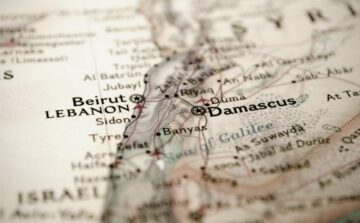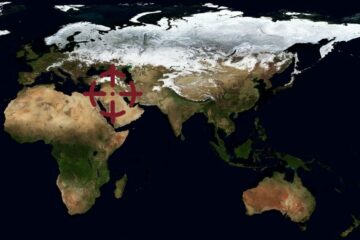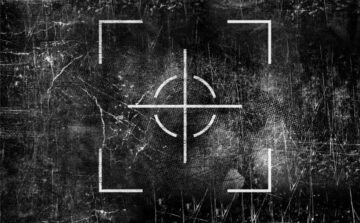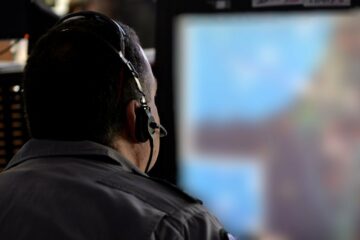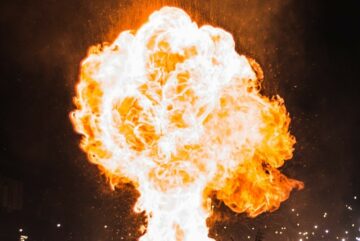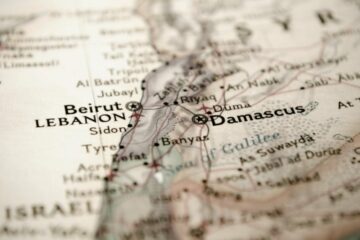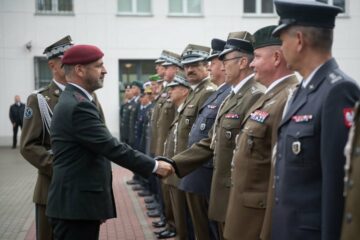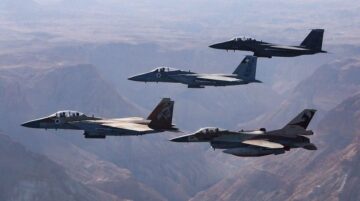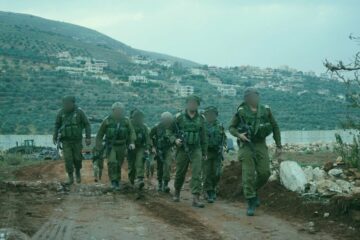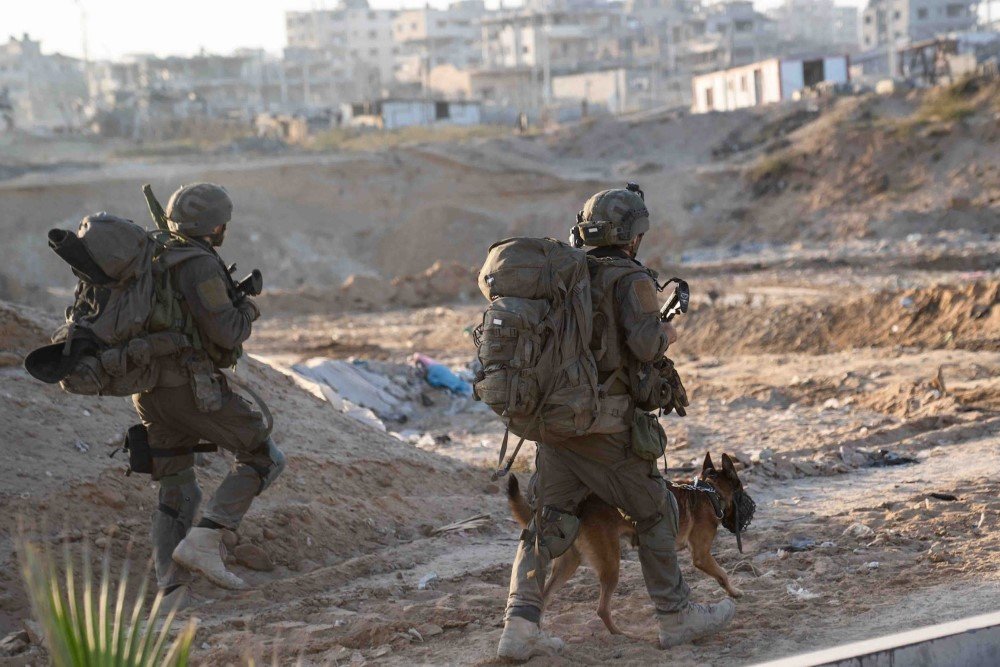
Six weeks into the Gaza war, the IDF’s performance has been mostly remarkable. Despite initial doubts, Israeli forces have shown that they are fully capable of mounting large-scale military operations with precision and speed.
The integration of advanced technologies and ability to coordinate different branches of the military stand out in particular.
So far, stopping the IDF advance has proven to be a very difficult task. Faced with Israel’s modern and well-equipped army, Hamas defense lines have crumbled quickly.
Overall, the performance of Israeli forces spells bad news for Gaza’s terror chiefs, and also for Hezbollah.
Rapid mobilization, swift advances
One of the most impressive aspects of the war has been the IDF’s ability to mobilize virtually the entire army, both regular and reserve forces, within a matter of days. This rapid mobilization allowed for weeks of training and preparation before launching the assault.
Most importantly, the quick deployment enabled reservists to sharpen their skills and seamlessly integrate with regular forces. Meanwhile, military chiefs adjusted and improved battle plans while taking advantage of the latest intelligence.
Once inside Gaza, IDF ground forces wasted no time in advancing swiftly and effectively. Maintaining the fog of battle, the army struck from multiple directions and kept forces constantly on the move.
The IDF impressively integrated new tech into ground operations, including advanced intelligence gathering and weapons systems. Moreover, close cooperation between infantry, armored, and engineering forces produced synchronized assaults that devastated Hamas positions and strongholds.
In parallel, the IDF leveraged its air superiority by deploying fighter jets, attack helicopters, and UAVs to provide close air support. Precise artillery and Navy fire further supplemented the offensive. Israel’s massive, high-precision fire power overwhelmed Hamas and paved the way for subsequent ground operations.
Overall, this combination of ground and air power allowed the IDF to rapidly destroy targets, leaving Hamas reeling and struggling to mount an effective defense. Israeli forces have already demolished some of Hamas’ primary battalions and seized control of the group’s nerve center in Gaza City. It appears that Hamas did not expect this to happen.
Global pressure, changing weather
The IDF’s performance is even more impressive given the challenges Israel faces. Amidst ongoing operations, the army had to constantly balance military objectives with humanitarian concerns. While waging the war, Israel made extensive efforts to minimize civilian casualties in the face of intense global scrutiny and growing calls for a ceasefire.
Most notably, the IDF established corridors for the safe passage of civilians, allowing them to move from northern to southern Gaza. Israel also allowed aid and fuel into the Strip, despite the possibility that this may support the Hamas war effort.
But defeating and destroying Hamas is strategic imperative for Israel’s security, so global pressure will likely not halt IDF operations at this point. Still, Israel’s leaders understand the urgency and the need to act decisively. The clock is ticking, and the IDF must make the most of the time it has.
Another challenge the IDF must cope with is the impact of weather conditions on military operations. While the weather has been favorable so far, winter storms and rain are coming.
Adverse weather may limit the IDF’s ability to conduct aerial operations, while also presenting challenges for ground forces in dense urban environments, impeding movement and affecting visibility.

The army’s ability to adapt and overcome such difficulties will be crucial for Israel’s prospects of success in the next stages of battle. Meanwhile, the IDF completed its logistic preparations for winter warfare, with needed equipment for troops already in place.
Lessons for Hezbollah
Hezbollah has been closely watching the war in Gaza to prepare for a future conflict with Israel. At this junction, the group’s military chiefs are likely concerned by what they see. IDF battlefield performance has been effective and at times exceptional, eclipsing early predictions.
Notably, while Hezbollah gained some combat experience in civil war Syria, much of it is likely outdated or irrelevant. In the Syrian theater, Hezbollah fighters faced an inferior enemy lacking an Air Force or cutting-edge weapons. A full-scale war against Israeli forces will be conducted under entirely different conditions.
A hint of this can already be seen in skirmishes on the Lebanon border, initiated by Hezbollah to divert Israel’s attention away from Gaza. The IDF has been consistently tracking and eliminating terror squads, killing dozens of Hezbollah operatives and Palestinian terrorists operating from Lebanese territory.
Hezbollah’s performance so far calls into question its ability to counter Israel’s modern warfare techniques and advanced weapons systems. While the group can surely hurt Israel with its large missile arsenal and other capabilities, many of its vital facilities and strongholds are vulnerable to IDF power.
Nasrallah could still decide to escalate the conflict and exact a heavier price from Israel, especially if Hamas faces total collapse. Yet Hezbollah may have to reassess its strategy and tactics, as it watches the IDF gradually seizing control of Gaza while degrading Hezbollah’s own positions on the Lebanon border.
- SEO Powered Content & PR Distribution. Get Amplified Today.
- PlatoData.Network Vertical Generative Ai. Empower Yourself. Access Here.
- PlatoAiStream. Web3 Intelligence. Knowledge Amplified. Access Here.
- PlatoESG. Carbon, CleanTech, Energy, Environment, Solar, Waste Management. Access Here.
- PlatoHealth. Biotech and Clinical Trials Intelligence. Access Here.
- Source: https://israelradar.com/analysis-gaza-war-phase-1-idf-vs-hamas-hezbollah/
- :has
- :is
- :not
- 1
- a
- ability
- Act
- adapt
- Adjusted
- advance
- advanced
- advancing
- ADvantage
- affecting
- against
- Aid
- AIR
- Air Force
- allowed
- Allowing
- already
- also
- amidst
- an
- analysis
- and
- appears
- ARE
- Army
- Arsenal
- AS
- aspects
- assault
- At
- attack
- attention
- away
- Bad
- Balance
- Battle
- Battlefield
- BE
- been
- before
- between
- border
- both
- branches
- by
- Calls
- CAN
- capabilities
- capable
- Center
- challenge
- challenges
- changing
- City
- civil
- civilian
- civilians
- Clock
- Close
- closely
- Collapse
- combat
- combination
- coming
- Completed
- concerned
- Concerns
- conditions
- Conduct
- conducted
- conflict
- consistently
- constantly
- control
- cooperation
- coordinate
- could
- Counter
- crucial
- cutting-edge
- Days
- decide
- defeating
- Defense
- dense
- deploying
- deployment
- Despite
- destroy
- DID
- different
- difficult
- difficulties
- divert
- dozens
- Early
- Effective
- effectively
- effort
- efforts
- eliminating
- enabled
- Engineering
- Entire
- entirely
- environments
- equipment
- escalate
- especially
- established
- Even
- exceptional
- expect
- experience
- extensive
- Face
- faced
- faces
- facilities
- far
- favorable
- fighters
- Fire
- For
- Force
- Forces
- from
- Fuel
- full-scale
- fully
- further
- future
- gained
- given
- Global
- gradually
- Ground
- Group
- Group’s
- Growing
- had
- hamas
- happen
- Have
- helicopters
- High
- HTTPS
- Humanitarian
- Hurt
- IDF
- if
- Impact
- imperative
- importantly
- impressive
- improved
- in
- Including
- initial
- initiated
- inside
- integrate
- integrated
- integration
- Intelligence
- into
- Israel
- Israeli
- IT
- ITS
- Jets
- jpg
- kept
- killing
- large
- large-scale
- latest
- launching
- leaders
- leaving
- Lebanese
- Lebanon
- leveraged
- likely
- LIMIT
- lines
- made
- maintaining
- make
- many
- massive
- Matter
- max-width
- May..
- Meanwhile
- Military
- minimize
- mobilization
- Modern
- Modern Warfare
- more
- Moreover
- most
- mostly
- MOUNT
- move
- movement
- much
- multiple
- must
- Need
- needed
- New
- New Tech
- news
- next
- no
- notably
- objectives
- of
- offensive
- on
- ongoing
- operating
- Operations
- or
- Other
- out
- Overcome
- overwhelmed
- own
- Parallel
- particular
- passage
- paved
- performance
- phase
- photo
- Place
- plans
- plato
- Plato Data Intelligence
- PlatoData
- Point
- positions
- possibility
- power
- precise
- Precision
- Predictions
- preparation
- Prepare
- pressure
- price
- primary
- Produced
- prospects
- proven
- provide
- question
- Quick
- quickly
- RAIN
- rapid
- rapidly
- regular
- remarkable
- Reserve
- safe
- scrutiny
- seamlessly
- security
- see
- seen
- seized
- shown
- skills
- So
- so Far
- some
- Southern
- speed
- stages
- stand
- Still
- stopping
- storms
- Strategic
- Strategy
- Strip
- Struggling
- subsequent
- success
- such
- support
- surely
- SWIFT
- swiftly
- Syria
- Systems
- tactics
- taking
- targets
- Task
- tech
- techniques
- Technologies
- territory
- terrorists
- that
- The
- Theater
- their
- Them
- they
- this
- ticking
- time
- times
- to
- Total
- Tracking
- Training
- under
- understand
- urban
- urgency
- very
- virtually
- visibility
- vital
- vs
- Vulnerable
- war
- wasted
- watches
- watching
- Way..
- Weapons
- Weather
- Weeks
- What
- while
- will
- Winter
- with
- within
- yet
- zephyrnet

